Canon transitions to new UAB Health System Role
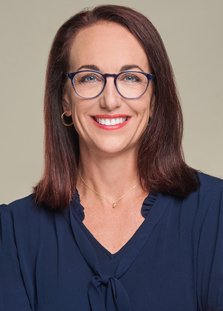 Cheri Canon, M.D., FACR, will transition from the role of Chief Clinical Officer for the UAB Medicine ambulatory practice to the role of UAB Health System Chief Clinical Integration Officer.
Cheri Canon, M.D., FACR, will transition from the role of Chief Clinical Officer for the UAB Medicine ambulatory practice to the role of UAB Health System Chief Clinical Integration Officer.
Leadership Transition Announcements April 2023
Diagnostic Radiology Program Director
Vice Chair of Education
Vice Chair of Faculty Affairs
The Department of Radiology continues to grow and evolve, and as a result, has made some exciting changes to leadership roles including a new Diagnostic Radiology program director, vice chair of education, and vice chair of faculty affairs.
Read moreAlumnus Spotlight with Goldstein
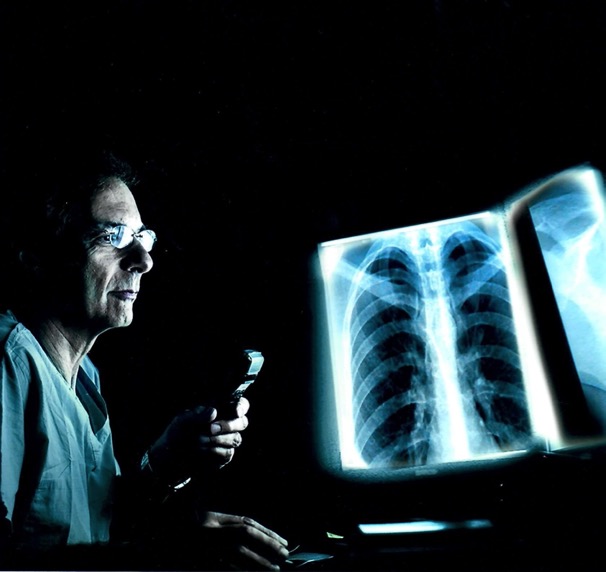 Meet UAB Radiology alumnus Warren Goldstein. We asked him questions about his past, future, and what working in Radiology means to him.
Meet UAB Radiology alumnus Warren Goldstein. We asked him questions about his past, future, and what working in Radiology means to him.
Alumnus Spotlight with Rutherford
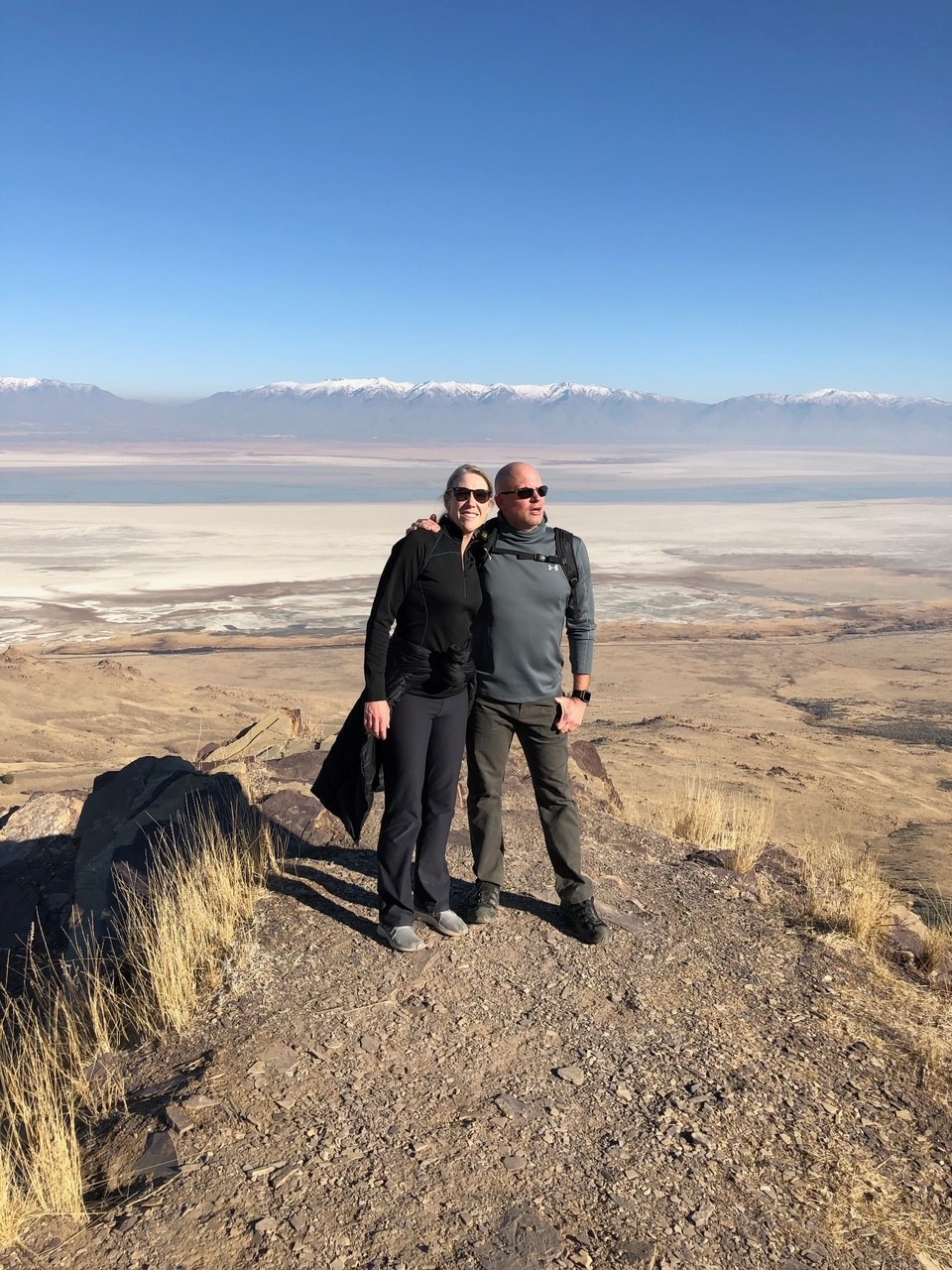 Meet Jill Rutherford, senior partner at Vulcan Imaging Associates and UAB Radiology alumni. We asked her questions about her past, future, and what working in Radiology means to her.
Meet Jill Rutherford, senior partner at Vulcan Imaging Associates and UAB Radiology alumni. We asked her questions about her past, future, and what working in Radiology means to her.
Perchik Directs Artificial Intelligence Literary Course

Jordan Perchik, M.D., abdominal imaging and informatics fellow, directed the Artificial Intelligence (AI) Literacy Course, a free one-week course covering lectures on fundamental terms and applications of AI in radiology. The course began to address a need for AI education in the radiology residency curriculum, with the goal of bringing practical and accessible AI education to radiology trainees around the world. After starting the course in 2020, the program has grown from a single institution at UAB to reach participants in over 25 programs across the United States and 10 countries.
Read moreHeersink Institute Innovation Fellows Program Selects Five Fellows From Radiology

The Heersink Institute for Biomedical Innovation recently called for applications for the Heersink Institute Innovation Fellows Program. A total of nine applicants from across UAB were accepted into the program, with five from the Department of Radiology. The purpose of the program is for Innovation Fellows to apply the entrepreneurial mindset to their discipline and academic area. The 2022 Heersink Innovation Fellows from Radiology are as follows:
Read moreLapi Selected to the Academy for Radiology & Biomedical Imaging Research Council of Distinguished Investigators Class of 2022

Suzanne Lapi, Ph.D., was selected to the Academy for Radiology & Biomedical Imaging Research (the Academy) Council of Distinguished Investigators (DI's) Class of 2022. One of the Academy's highest honors, this prestigious award recognizes individuals for their outstanding contributions to the field of medical imaging.
The Academy announced that 40 researchers were selected to receive the Academy’s 2022 DI Award. This class will be welcomed as part of the broader Council which includes a network of nearly 500 imaging investigators. From this Council, Lapi will benefit from networking, the dissemination of legislative updates and engagement in advocacy efforts.
Lapi will be honored for her achievement at this year's annual Academy Gold Medal and Distinguished Investigator ceremony and reception during the 2022 RSNA in Chicago, IL on Tuesday, November 29, 2022. Congratulations to her!
Galgano Named Vice Chair of Quality and Patient Experience
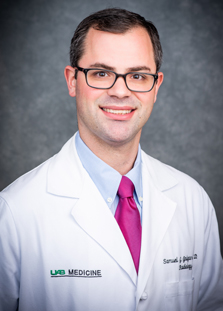
Sam J. Galgano, M.D., will assume the new role of vice chair of quality and patient experience, effective October 1. This role has been revitalized from the vice chair of quality improvement and patient safety, with the goal of enhancing quality patient care.
Galgano, chief of abdominal imaging, and director of the abdominal imaging fellowship program, will continue his section chief role and his clinical roles in abdominal imaging and molecular imaging and therapeutics.
“I am extremely excited to take on this new role and continue the fantastic work done before me by Dr. Larrison,” said Galgano. “My vision for this role is simple: to make the patient experience at UAB Radiology the best and highest quality that it can be. For us, this begins at exam scheduling and extends through diagnostic and interventional procedures and imaging throughout the course of one’s illness.”
Galgano completed his undergraduate training and medical school at Emory University. He then completed his residency training in diagnostic radiology at the University of Alabama at Birmingham, during which he served as chief resident. He completed fellowships in both molecular imaging and therapeutics as well as abdominal imaging at the University of Alabama at Birmingham where he later joined the faculty. During his abdominal imaging fellowship, he was awarded an RSNA Fellow Research Grant for his work on PET/MRI for patients with prostate cancer and participated in the UAB Clinical Investigator Training Program.
Clinically, Galgano has expertise in CT, ultrasound, MRI, fluoroscopy, PET/CT, and PET/MRI. He is a co-chair of the Academy for Radiology and Biomedical Imaging Research Council of Early Career Investigators in Imaging.
His research interests include novel radiotracer use in PET/CT and PET/MRI for applications in genitourinary and gastrointestinal oncology with particular interest in prostate cancer, pancreatic cancer, and hepatocellular carcinoma. He is a regular member of the multidisciplinary prostate, pancreaticobiliary, and hepatobiliary tumor boards and serves on the UAB Comprehensive Cancer Center Protocol Review Committee and Gastrointestinal and Genitourinary Oncology Working Groups.
“I plan to interface and collaborate with individuals throughout the UAB Heersink School of Medicine and O’Neal Comprehensive Cancer Center to provide the highest quality radiologic care to our patients,” said Galgano. “I am thrilled for the journey to come.”
Special thanks to Matthew Larrison, M.D., professor in the musculoskeletal section, who has served as a pivotal leader in this position since he was appointed in 2016. He leaves behind a legacy of quality care for our patients, and will be stepping down to focus on global outreach. We appreciate his work and dedication and wish him well in his other endeavors.
Alumnus Spotlight with Shadinger
Since completing her diagnostic radiology residency and a women’s imaging fellowship 13 years ago, Libby Shadinger, M.D., has been a member of a diagnostic radiology group in Huntsville, Alabama. She practices general radiology, but also serves as the medical director for the Huntsville and Madison Hospital Breast Centers. We asked her questions about her past, future, and what working in Radiology means to her.
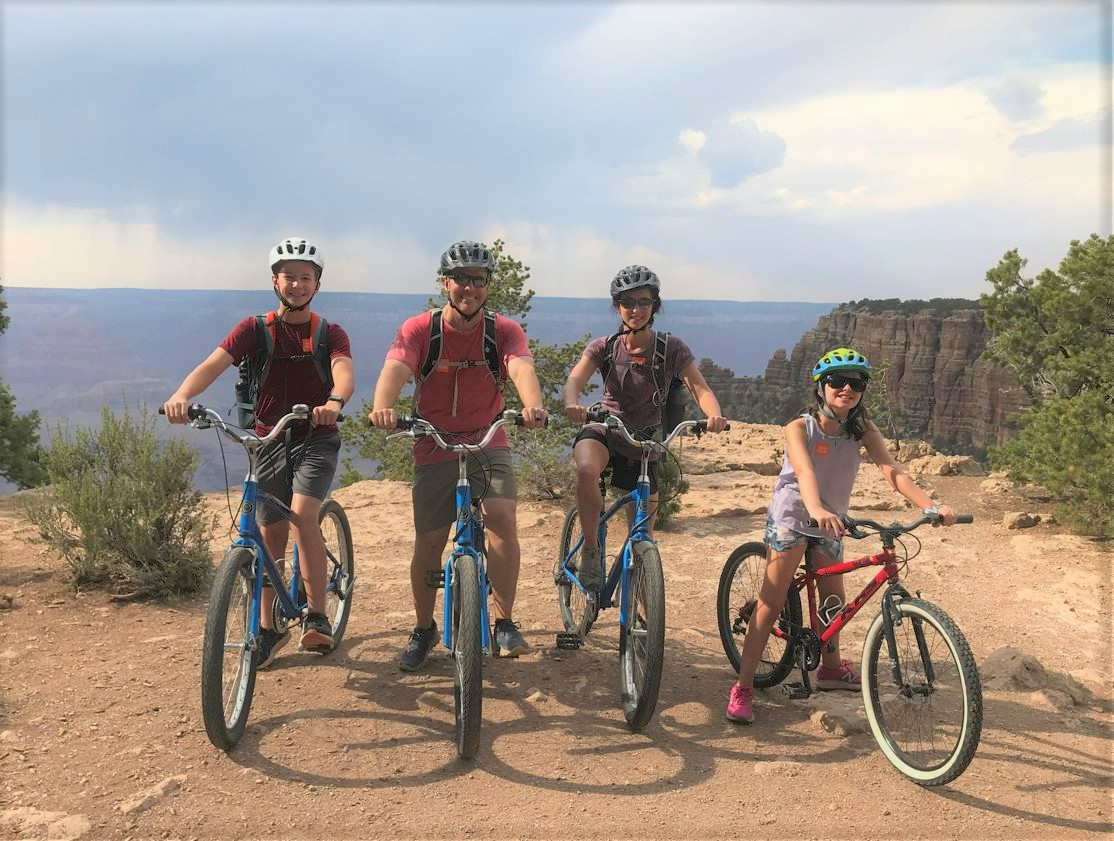
What is your background at UAB?
I was a medical student at the then University of Alabama School of Medicine from 1999-2003.
Why did you choose UAB?
I chose UAB because I thought it would give me a strong foundation for becoming a compassionate, enthusiastic, and knowledgeable physician. Medical school training at UAB presented many challenges. However, it also offered caring, inspirational mentors and excellent training that enabled me to meet these challenges and to relish more as my confidence grew.
What encouraged you to become a physician?
Despite having zero medical background in my family, I was always intrigued with anything medical even as a small child. I always wanted to know why and how a disease process happened, and I would spend a lot of time reading that huge Better Homes and Gardens Family Medical Guide reference book which most families seemed to have during that era. That curiosity never left me (although I learned to find better medical literature sources), and I still find medicine fascinating.
What do you consider the biggest success of your career?
My biggest successes will ultimately be what my family and close friends feel that I have contributed to their lives beyond or perhaps in connection with my career. What I hope they would say is that I have loved and cared for them well even as I have worked very hard to serve my patients, to be a strong partner in my group, and to be a solid physician in my community. I have tried to be dedicated and ambitious in my career but to still be present for my children, especially, for all of the “mom” things big and small. If I can inspire my children to work hard and aim high in their careers but to work equally hard to be present in their lives outside of their work (and to do it better than me), then I will be satisfied that my career has been a success.
What is one piece of advice you would give to current residents, fellows and/or new faculty?
If I had to choose one piece of advice for those new or relatively new in their career, I would suggest intentionally and selectively seeking out strong mentors who will illuminate the path ahead and will hold you accountable to continuing to evolve yourself in your work and beyond it.
Professional Development with Samuria Thomas
 Samuria Thomas, researcher I, has worked in the Department of Radiology Preclinical Imaging Facility for five years. She has become a skilled preclinical MRI technician, in addition to other preclinical instruments offered by this institutional core. Over the last few years, Samuria has decided to continue her education journey while continuing full time work in our department. She shared some of her thoughts on the journey below in an interview.
Samuria Thomas, researcher I, has worked in the Department of Radiology Preclinical Imaging Facility for five years. She has become a skilled preclinical MRI technician, in addition to other preclinical instruments offered by this institutional core. Over the last few years, Samuria has decided to continue her education journey while continuing full time work in our department. She shared some of her thoughts on the journey below in an interview.
What motivated you to decide to continue your education?
I always knew I wanted to continue my education, but other life events were made the priority for a long time. I did not see the opportunity or the time to go to school while to raising my son. My career change at UAB in 2017 gave me a choice of remaining in the same position or gaining experience in an area I had little knowledge or background. I chose research. In doing so, I was able to strive for something different for myself and my son.
Have you felt encouragement from the department on your journey? How have they shown support for your professional growth?
A group of veteran women who worked near my area saw something in me that I did not. I am grateful to them. The Depatment of Radiology has also been an encouragement since the day I accepted my position. I have been encouraged to learn the different imaging modalities in our lab and to take classes here at UAB. I decided to align my priorities and became a student and a full-time researcher.
The department shows personal interest in the steps I take each semester. In periodic meetings with my supervisor, we discuss my expectations for school, and this encourages accountability.
How do you balance your life between work, school, and family life?
Balancing my life with school and work was a struggle in the beginning. I had to find the balance and raise my son. At first, I thought I could do everything all at once, no breaks. I eventually found my balance; communicating with my son about things needed around the house before I got home and exercising became another way to balance and clear my mind. I was very scattered with home, school and work. God and family helped me through all these types of challenges I have faced thus far.
What words of advice would you have for anyone taking the leap to continue professional growth while working full time?
My advice to anyone wanting to take a leap of faith; is to go for it. Never stop learning, especially if it is something different. There is always room for growth and new experiences.
Alumnus Spotlight with DeVenny
Meet Michael DeVenny, M.D., Private Practice Radiologist at The Radiology Clinic Group in Tuscaloosa. We asked him questions about his past, future, and what working in Radiology means to him.
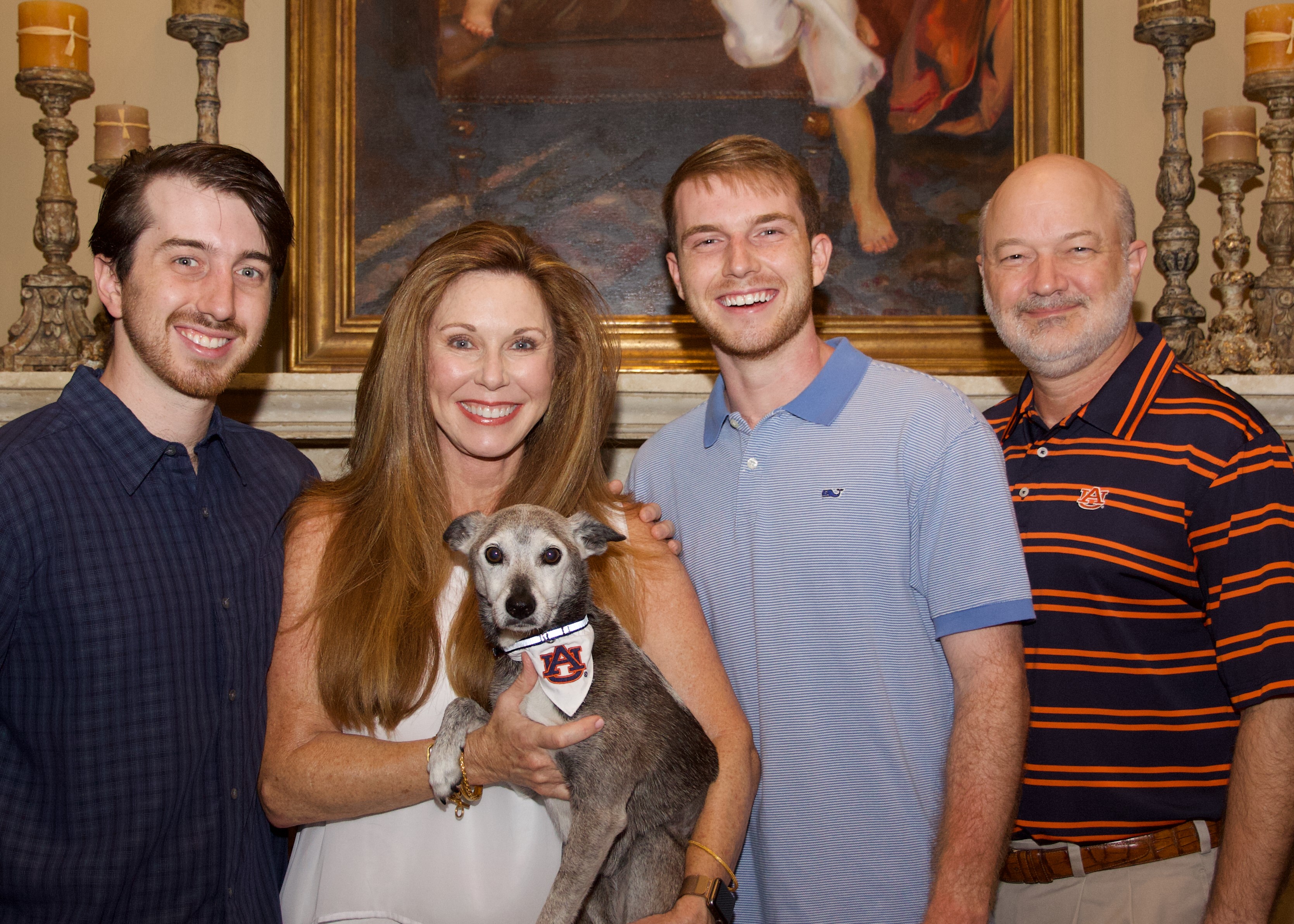
What is your background at UAB?
I attended college at Auburn University earning a Bachelor of Science in Nursing. Afterwards, I worked at the East Alabama Medical Center in the Medical Intensive Care Unit in Opelika for three years. This was followed by completing medical school, Radiology residency and a fellowship at UAB. I have been working in Private Practice at The Radiology Clinic Group in Tuscaloosa since July of 1996 and will be retiring in September of this year.
Why did you choose UAB?
I was a state resident and UAB was a very good medical school. After completing medical school, I interviewed at 11 or 12 Radiology residency programs including some of the best programs in the country. At the end of the day, I couldn’t find any that had an advantage over UAB. If you have the best at home, why leave?
What encouraged you to become a physician?
I was a practicing RN in the Medical Intensive Care Unit when I decided I wanted to do more. I wanted to expand on what I knew about medicine and then practice at a higher level. During medical school, I realized that Radiology was one of the few medical specialties that offered an in-depth education about all parts of the body. Additionally, the people in Radiology were happy and inviting. The constant interactions between my medical school clinical teams and the UAB radiologists, residents and fellows were a very positive experience. I didn’t quite understand everything radiologists did at first, but when I interacted with the team, they had answers and I wanted to be the one who had the answers. I wanted to be the person to help guide treatment and provide answers that would help the patient.
What do you consider the biggest success of your career?
Relationships.
During my residency, I was a chief resident which allowed me to participate in the interview process and eventually the recruitment of Dr. Cheri Canon. Dr. Canon was considering other programs. After she interviewed, I made multiple phone calls that were a combination of selling UAB and Birmingham and, at times, pleading. I felt that she was a remarkable candidate who was also a remarkable person. As a chief resident, I worked extensively with Dr. Canon in her first year and she was always prepared and excelled. She took to Radiology very readily and it was a joy to work with her during my time there. Although not entirely true, I claim all the credit for her residency choice. The rest is history.
Over the years, I have been in many leadership roles with our local hospitals and my group, but those are not accomplishments that I cherish. The greatest accomplishments in my professional career were developing collegiate relationships with physicians in other specialties who would call me to review cases, often complicated, and ask what I saw and what to do next. That contribution to patient care is not always evident to the patient, but it makes a difference. I have been able to develop those relationships over 25 plus years. I think that is the highlight of my career. As I retire, that aspect is something that I will miss the most.
What do you look forward to most with your upcoming retirement?
When you practice medicine full-time, it is to the exclusion of many other things. That, mostly being family. I look forward to the opportunity to spend much more time with my parents and family. “To whom much is given, much is expected.” I have been given a lot. I look forward to spending more time with my wife and spending more time with our church, community volunteering and traveling.
Lapi and Smith Assume New Roles in the Department of Radiology
In order to adapt to new opportunities in the Heersink School of Medicine and to recognize two outstanding leaders in the Department of Radiology, Cheri Canon M.D., FACR, FAAWR, FSAR, proudly announces that Suzanne Lapi, Ph.D., will be named the vice chair of Research and Andrew Smith, M.D., Ph.D., will be the inaugural vice chair of Innovation.
 As vice chair for Research, Dr. Lapi's role will expand to oversee the basic science, translational and clinical research portfolio in Radiology including strategic planning, mentoring and pilot initiatives. She will also represent the Department of Radiology for new research initiatives both within UAB and externally and will ensure alignment of the Department’s research goals with both Radiology and Heersink leadership. Dr. Lapi will be a resource for faculty and staff for all research matters including project development, grant writing, collaborations and experimental activities and will work closely with Morgan Amos and research administration to nurture and grow the program.
As vice chair for Research, Dr. Lapi's role will expand to oversee the basic science, translational and clinical research portfolio in Radiology including strategic planning, mentoring and pilot initiatives. She will also represent the Department of Radiology for new research initiatives both within UAB and externally and will ensure alignment of the Department’s research goals with both Radiology and Heersink leadership. Dr. Lapi will be a resource for faculty and staff for all research matters including project development, grant writing, collaborations and experimental activities and will work closely with Morgan Amos and research administration to nurture and grow the program.
“I am thrilled to expand my role in the department and to work with our outstanding faculty and staff to grow our research portfolio and enhance collaborations in the Department of Radiology and the Heersink School of Medicine” said Dr. Lapi.
 As vice chair for Innovation, Dr. Smith will oversee innovation and commercialization of inventions in Radiology. He will represent the Department of Radiology on the UAB Entrepreneurship Development Committee and with the Harbert Institute for Innovation and Entrepreneurship (HIIE). Dr. Smith will assure departmental alignment with the Heersink Institute for Biomedical Innovation and foster UAB Radiology interests in innovation with industry and partnering research institutions. He will work with Dr. Canon to provide current and future faculty with assistance in invention disclosures, external activities, conflicts of commitment, conflicts of interest, small business grants, licensing of innovations, and startup companies. Dr. Smith will host quarterly entrepreneurship rounds and introduce faculty to a variety of opportunities that foster innovation.
As vice chair for Innovation, Dr. Smith will oversee innovation and commercialization of inventions in Radiology. He will represent the Department of Radiology on the UAB Entrepreneurship Development Committee and with the Harbert Institute for Innovation and Entrepreneurship (HIIE). Dr. Smith will assure departmental alignment with the Heersink Institute for Biomedical Innovation and foster UAB Radiology interests in innovation with industry and partnering research institutions. He will work with Dr. Canon to provide current and future faculty with assistance in invention disclosures, external activities, conflicts of commitment, conflicts of interest, small business grants, licensing of innovations, and startup companies. Dr. Smith will host quarterly entrepreneurship rounds and introduce faculty to a variety of opportunities that foster innovation.
“The faculty and staff in the Department of Radiology are highly innovative in their pursuit of excellence in clinical care, research, and education, and I am excited to facilitate change and opportunities in innovation” said Dr. Smith.
We look forward to the future with these expanded and new roles which will continue to propel the department’s mission, vision, and goals.
Larimer Named Advocacy Lead by the Academy for Radiology and Biomedical Imaging Research Council of Early Career Investigators in Imaging
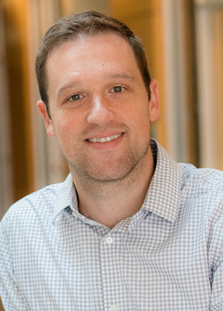
Benjamin Larimer, Ph.D., was named advocacy lead by the Academy for Radiology and Biomedical Imaging Research as the newest Council of Early Career Investigators in Imaging (CECI²). As a part of the early career council alumni, he will help the Academy to continue advancing this program's reach and work to better cultivate imaging's advocates of tomorrow.
"I am very excited to be able to translate to a leadership within the Academy of Radiology and Biomedical Research’s Council for Early Career Investigators. The Academy offered me tremendous support and opportunities as an early career investigators, and I hope to do the same moving forward" said Larimer.
While in this position, Larimer will work closely with the Academy’s senior director of Government Affairs and Strategic Initiatives, Michael Heintz, on continued CECI² advocacy programming for the incoming class of 2022-23 and the growing network of alumni to create advocates for imaging research. He will also help identify suitable advocacy programming and training, work with the Academy to ensure advocacy materials are appropriate, help to enhance the visibility of the Academy’s advocacy efforts to others in the CECI² program, and provide an important perspective as a hands-on resource.
"We are delighted that Dr. Larimer has been selected to represent UAB in this important and impactful program" said Suzanne Lapi, Ph.D. who is vice chair of Translational Research in the Department of Radiology at UAB.
Canon Named as a 2022 Ashbel Smith Distinguished Alumni Award Recipient

The University of Texas Medical Branch at Galveston (UTMB) John Sealy School of Medicine Alumni Association Board of Trustees named Cheri L. Canon, M.D., FACR, FAAWR, FSAR, as a 2022 Ashbel Smith Distinguished Alumni Award recipient.
The Ashbel Smith Distinguished Alumni (ASDA) Awards candidates are recommended to the Board of Trustees by the ASDA awards committee after an in-depth review that is based on recognized contributions to the medical field, support for the high standards of excellence within the profession, and the prestige reflected upon UTMB.
Dr. Canon, class of 1994, was presented the award at a reception held in honor of the 2022 recipients and during the UTMB John Sealy School of Medicine Commencement Ceremony.
The ASDA Awards are the highest alumni honor given by the university's John Sealy School of Medicine Alumni Association. It recognizes outstanding service to the medical profession and to humanity, while honoring the memory of Dr. Ashbel Smith, a prominent figure in Texas medicine, politics and education. Smith was considered the driving force behind establishing the University of Texas at Austin in 1881, and a medical department that would later be known as the University of Texas Medical Branch in Galveston in 1891.
Congratulations on this well-deserved honor, Dr. Canon!
Bolding Named Associate Director of UAB’s Neuroengineering Ph.D. Program
 Mark Bolding, Ph.D., was named associate director of UAB’s Neuroengineering Ph.D. program, the only independent neuroengineering program in the nation. Dr. Bolding has been instrumental in its formation.
Mark Bolding, Ph.D., was named associate director of UAB’s Neuroengineering Ph.D. program, the only independent neuroengineering program in the nation. Dr. Bolding has been instrumental in its formation.
"I look forward to helping shape this new degree program and work with all the amazing Ph.D. students we are recruiting. I think that many of them will have interests that are well aligned with those of faculty in Radiology" Bolding said.
Congratulations, Dr. Bolding!
Vidal Selected as an RSNA GLC Team Member in Ecuador
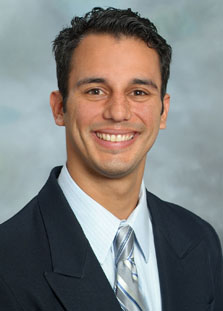 Jorge Vidal, M.D., FACR was selected as an Radiological Society of North America (RSNA) Global Learning Center Program (GLC) Team Member in Ecuador.
Jorge Vidal, M.D., FACR was selected as an Radiological Society of North America (RSNA) Global Learning Center Program (GLC) Team Member in Ecuador.
The RSNA GLC is an initiative created by the Committee for International Radiology Education. The program involves partnership with an international radiology department for development and execution of a customized learning plan. Additionally, the GLC will offer equipment and technological assistance and upgrades. The GLC aims to build sustainable regional education centers in middle to low-income countries. Currently, there are GLCs in South Africa, Tanzania and a new GLC will begin in Ecuador in early 2022.
The GLC pairs a team of RSNA members with a team of local radiologists at the site to focus on two chosen subspecialty areas. The RSNA team is comprised of four RSNA members, with one member designated as the GLC Program Director. Team members are appointed for 18-month terms and the GLC Program Director will serve for all three years.
Dr. Vidal has been placed on the GLC Ecuador team at Hospital Metropolitano de Quito. This GLC focuses on the areas of musculoskeletal and cardiothoracic radiology. His term on the GLC team will begin in January 2022 and end in June 2023.
Saddekni Appointed as Professor Emeritus of Radiology
 On June 16, 2021, Souheil Saddekni, M.D., FSIR, FAHA, retired from the UAB Department of Radiology. Dr. Saddekni joined the faculty at UAB as an associate professor in 1991, advancing to professor with tenure in 1996. Since joining the department, Dr. Saddekni has had an impactful and distinguished career as a nationally and internationally recognized pioneer of interventional radiology, educator, and researcher.
On June 16, 2021, Souheil Saddekni, M.D., FSIR, FAHA, retired from the UAB Department of Radiology. Dr. Saddekni joined the faculty at UAB as an associate professor in 1991, advancing to professor with tenure in 1996. Since joining the department, Dr. Saddekni has had an impactful and distinguished career as a nationally and internationally recognized pioneer of interventional radiology, educator, and researcher.
In special recognition of his 30 years of faithful and distinguished service to UAB, the Department of Radiology and the Heersink School of Medicine wish to acknowledge Dr. Saddekni by appointing him as professor emeritus of radiology.
“Lessons never end. I never think that I learned my lesson, we’re liable to repeat mistakes, but more likely not to repeat them if we learn. We learn something every day, but the most valuable lesson is to be confident but humble and willing to work with people young or old, big or small. No one is too ignorant to ignore or very smart to worship” said Dr. Saddekni.
Congratulations to Dr. Saddekni on appointment of professor emeritus of radiology! A celebration in Dr. Saddekni’s honor will be announced soon.
Sorace and Napier Receive HHMI Gilliam Award
The Howard Hughes Medical Institute (HHMI) plays a powerful role in advancing scientific research and education in the United States. Anna Sorace, Ph.D., assistant professor in the University of Alabama at Birmingham Department of Radiology, and her student in cancer biology, Tiara Napier, Ph.D., received an HHMI Gilliam Award. 
This award will support Napier during her Ph.D. research. Napier's research project focuses on Positron Emission Tomography (PET) imaging to identify early predictive biomarkers of response to immunotherapy and chemotherapy in triple negative breast cancer by noninvasively quantifying hypoxia (FMISO-PET) imaging and activated T-cells with Granzyme B (GZP) PET imaging.
In addition to research support, this award also provides supplemental funds to support diversity and inclusion efforts at the graduate level for other trainees. These funds are dedicated to trainees' attendance at leadership and career-focused meetings. This opportunity allows Sorace and Napier, as mentor and trainee, to recieve unique training focused on fostering the development of a diverse and more inclusive academic scientific environment.
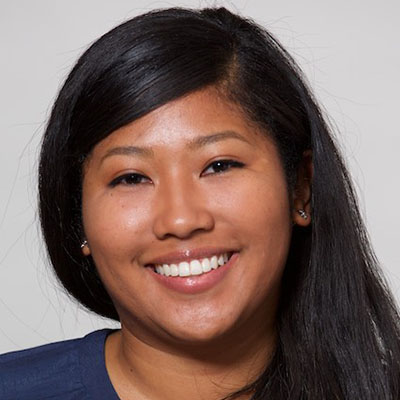
HHMI plays a powerful role in advancing scientific research and education in the United States. It's program in biomedical research rests on the conviction that scientists of exceptional potential, commitment, and imagination will make fundamental discoveries for the betterment of human health if they receive the resources, time, and freedom to pursue challenging questions. The institute’s science education programs support initiatives with the power to transform education in the life sciences for all students, especially those from populations historically excluded from and underrepresented in science. Its objectives are to recruit and develop students with the potential to become future leaders of science and science education, to partner with faculty and institutions committed to advancing diversity and inclusion in science, and to promote scientific literacy. Just as today’s researchers solve complex questions by working across scientific disciplines and integrating tools from these disciplines, the institute seeks to support science education by integrating a variety of tools and approaches that will engage students in science.
A Decade of Difference
Cheri Canon, M.D., FACR, FAAWR was named chair of the University of Alabama at Birmingham Heersink School of Medicine Department of Radiology in 2011. Now, in 2021, we are taking a look back to see what the last ten years under her leadership has looked like, how it has transformed the department, and what her peers have to say.
Cheri Canon, M.D., FACR, FAAWR, FSAR
When first named chair, what plans did you have for the department? 
I wanted to continue the strong history of excellence in clinical care and education. I also wanted to continue to invest in and expand our research mission, which was also the vision of Dr. Reginald (Reggie) Munden, my predecessor. With his departure, I “inherited” his legacy, including the cyclotron and Advanced Imaging Facility project, then in the planning stages only. This was quite a steep learning curve for me, but very exciting. At the time, I had no idea of its potential impact to radiology, UAB Medicine, and UAB. I quickly learned that in order to create a sustainable research program and balance it with a very busy clinical service, we needed to focus and invest in key strategic areas. The biggest challenge as a new chair was saying no, sometimes to great ideas, but resources are limited. I have also learned that time is one of our most valuable and limited resources. My other plans included expansion of our training programs as well as our clinical footprint. In my “chair” letter to Dean Watts dated 12/19/2010, I outlined four pillars of my strategic plan: innovation, efficiency, quality, and customer service. These cross all three missions and remain the underpinnings UAB Radiology.
What one accomplishment are you most proud of as chair?
The people. We have successfully recruited a remarkable faculty and trainees year over year. Our department has grown from 62 faculty in 2011, to currently 101, an increase of 63% over the last decade. Specifically, we have increased research faculty and staff from a combined total of 20 in 2011 to 47 currently, with an increase in research funding from $1,285,128 to $5,960,376, an increase of 364%.
What positive changes have you seen in the department in the past ten years?
There have been so many. Our leadership structure has significantly evolved to a matrixed and distributed model. We have a remarkable leadership team with new leadership positions, allowing for more informed succession planning and leadership development across our faculty. Because of the growth in the Department of Radiology in size and complexity, we need a cabinet of strong, diverse leaders who are willing to engage. We are so fortunate that we have such a deep bench.
I am also proud of the intentional efforts I have seen across the Department of Radiology as we strive for diversity with inclusion. While we still have work to do, I am optimistic we will achieve our vision.
Our clinical care continues to be cutting edge with new section of Emergency Radiology, new divisions of Interventional Radiology and Molecular Imaging and Therapeutics. These changes better reflect the remarkable care our subspecialized clinical faculty provide for our patients.
What are your hopes and goals for the department moving forward?
I hope we continue our trajectory in advancing innovative clinical care and research, that we grow our training programs, and that we create culture where individuals belong, thrive and find fulfillment.
Faculty members in the department have noticed and acknowledged Dr. Canon’s determination and success during her time as chair.
Desiree Morgan, M.D.
How have Dr. Canon’s efforts grown the department over the past 10 years?
We have had unbelievable growth in clinical volumes, imaging studies, and procedures which support the entire health care enterprise at UAB. Her stature in leadership of the medical center has set the tone for our multidisciplinary efforts in holistic patient care. In addition, with strategic planning we have grown our research footprint and collaboration remarkably in these competitive and difficult times. Always a champion for improvement, Dr. Canon has used an integrated team approach to accomplish these goals; she believes in listening to multiple viewpoints and ideas to catalyze growth.
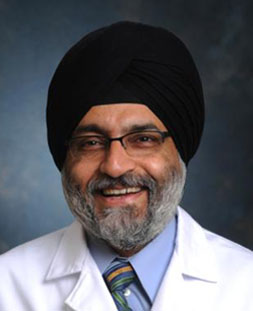
Singh Satinder, M.D. FCCP, FNASCI, FSABI
How has Dr. Canon’s personality, character, and drive impacted the department?
She has a very pleasant, strong and expressive personality. She is very confident and motivated and get things done. She promoted diversity and emphasized the role of women in the department. All of these traits have positively impacted the department‘s mission in all three pillars of clinical care, education and research.

Michael Yester, Ph.D., DABR, FAAPM, FACR
What changes do you hope to see for the future of our department, and how do you think Dr. Canon’s role as chair will assist with those changes?
One prominent aspect for the future is diversity within the department and this is something that Dr. Canon has championed quite successfully and know it will continue. In addition, the future will involve sustained growth and the issue will be office space. Dr. Canon has had great success in working through such matters and her influence and stature within the institution will be a big help.
Canon named chief clinical officer of Ambulatory Services
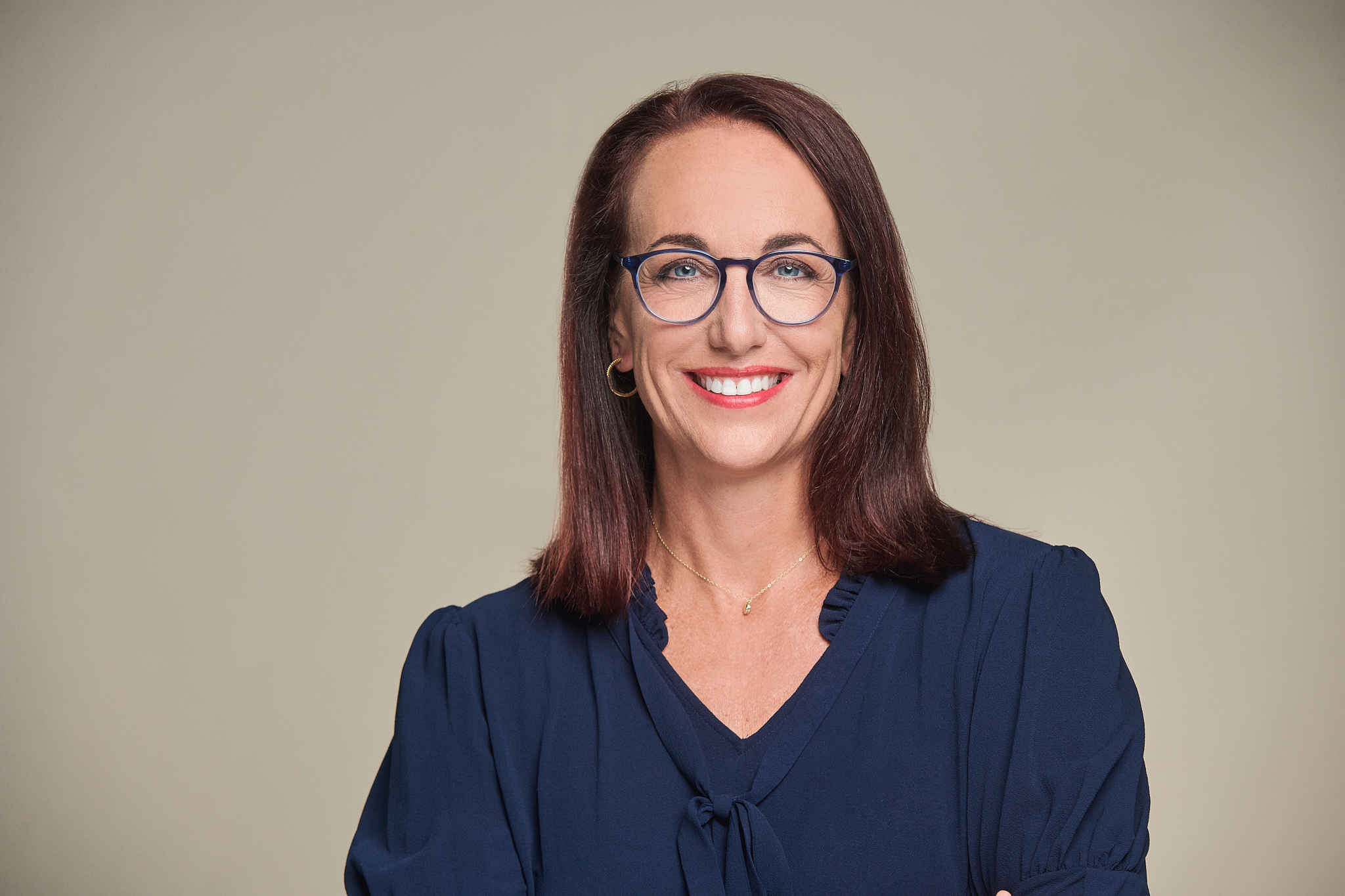 Cheri Canon, M.D., FACR, FAAWR, has been named chief clinical officer for the ambulatory practice at the University of Alabama at Birmingham (UAB). Canon is a professor and the Witten-Stanley Endowed Chair of Radiology in the Department of Radiology.
Cheri Canon, M.D., FACR, FAAWR, has been named chief clinical officer for the ambulatory practice at the University of Alabama at Birmingham (UAB). Canon is a professor and the Witten-Stanley Endowed Chair of Radiology in the Department of Radiology.
In this role, Canon will work closely with Patricia Pritchett, executive vice president of Administration and Ambulatory Services, to enhance excellence, quality, efficiency, and access.
“Over the past several years, Dr. Canon has served as chair of the Ambulatory Access Executive Committee,” says Reid F. Jones, CFO of UAB Medicine. “In this role, she has been instrumental in addressing many of the challenges we face with regard to physician access. She also has been invaluable in working with and providing guidance to the Access Center, to help streamline the issues affecting efficient patient scheduling.”
Canon will continue serving as chair of the Department of Radiology.
